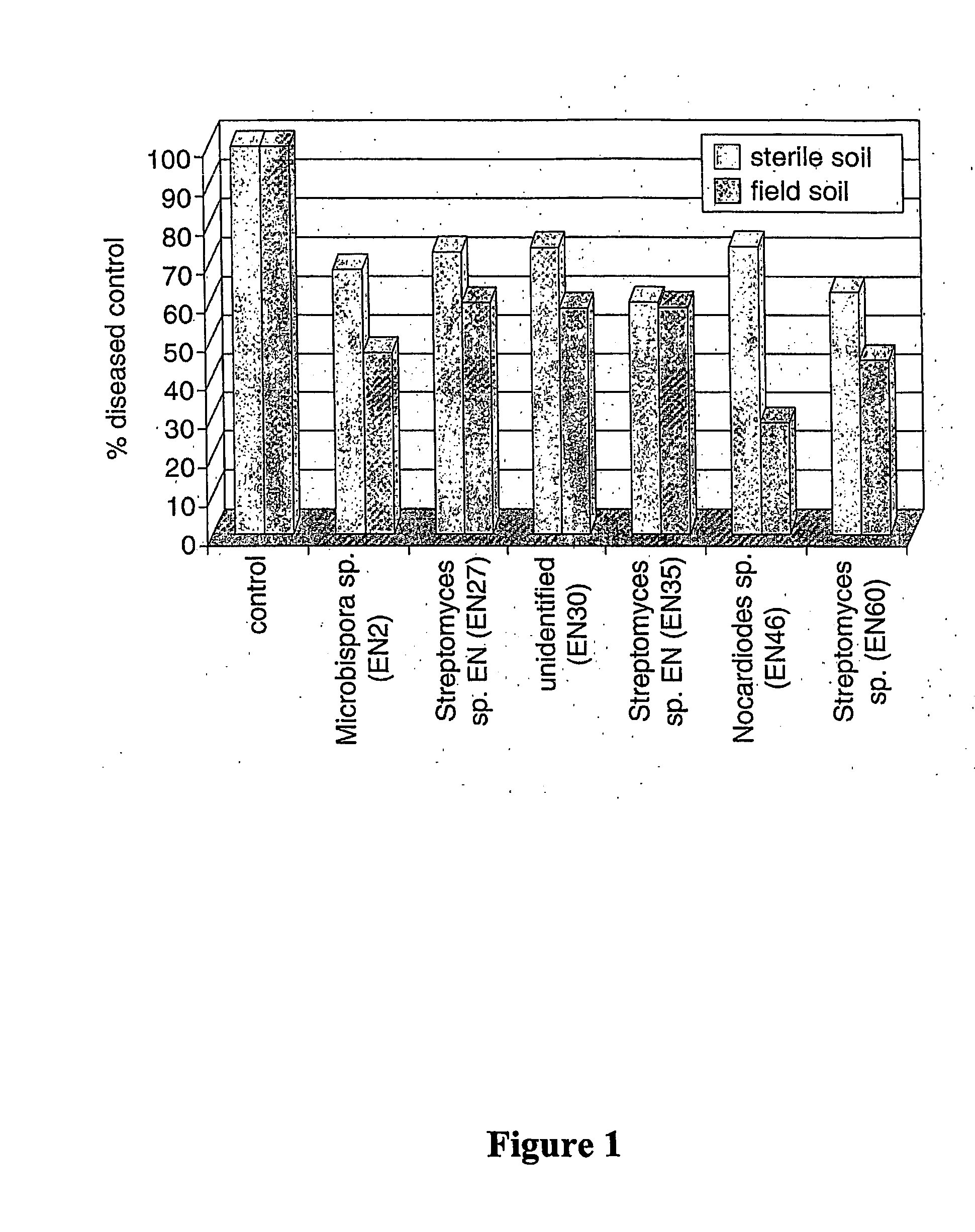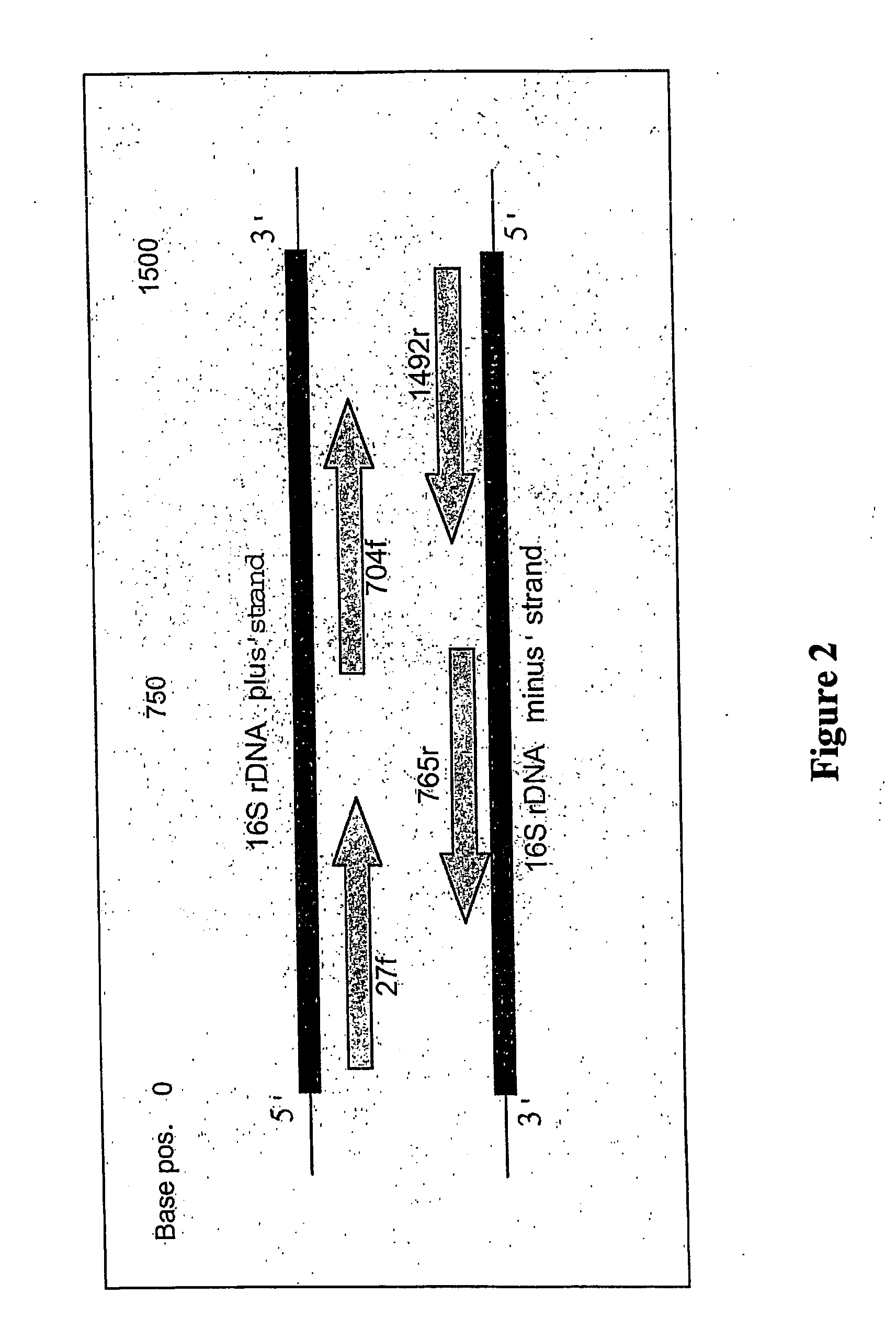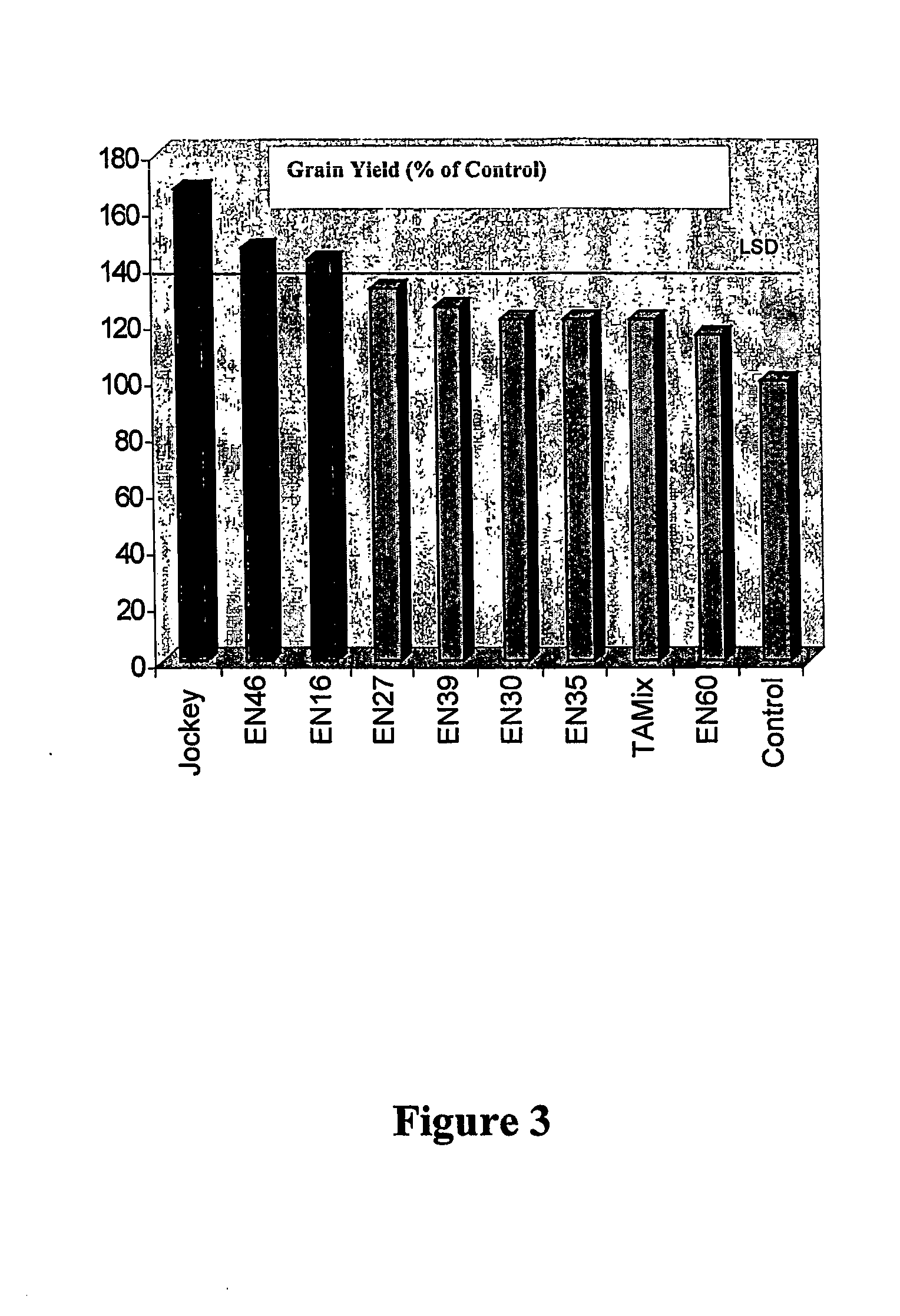Method and agents for improving plant productivity involving endophytic actinomycetes and metabolites thereof
a technology of endophytic actinomycetes and endophytic actes, which is applied in the field of improving plant productivity, can solve the problems of reducing potential grain yields and no reliable means to control these pathogens either, and achieves the effect of low stringency
- Summary
- Abstract
- Description
- Claims
- Application Information
AI Technical Summary
Problems solved by technology
Method used
Image
Examples
example 1
Endophytic Actinomycete Isolation
Sampling and Isolation
[0525] Plants from 9 fields from three major wheat growing regions in South Australia were sampled at 6-7 week intervals across the growing season. The sites sampled on the Eyre Peninsula were Tuckey, Lock, Yabmana and Yabmana*. Yabmana* was adopted as a sample site at the 11 week sampling when it was observed that the crop in this field was particularly vigorous. These sample sites were characterised by sandy alkaline soils and relatively low rainfall (Tuckey, rainfall=330 mm / year). The sites sampled in the South-East region were Bool Lagoon, Struan and Wolseley. These were characterised by cracking clay soils and higher rainfall. The sites sampled in the mid-North region were Avon and Wild Horse Plains. These were of a loamy earth type soil. Avon was chosen as a sample site as this soil has shown to be suppressive to Rhizoctonia root rot of wheat and Take-all (Ggt) (Roget et. al, 1999). These plants were used for endophyte ...
example 2
Actinomycete Characterisation Using Partial 16S rDNA Sequencing
Methodology
DNA Extraction from Actinomycetes
[0536] For each isolate to be extracted, a loopful of mycelium and spores were scraped from solid growth media and suspended in 400 ul of saline-EDTA (0.15 M NaCl, 0.1M EDTA pH 8.0) by vortexing. To this, 10 ul of lysozyme was added which was then incubated at 37° C. for 45 minutes. Following this, 10 ul of 1% (w / v) proteinase K and 10 ul of 25% SDS was added followed by incubation at 55° C. for 30 min. A further 10 ul of 25% SDS was added and the tubes were re-incubated at 55° C. for 30 minutes. The tubes were then centrifuged at 10000 rpm for 5 mins in a microcentrifuge to pellet the cell debris, and the supernatant was transferred to a new tube. An equal volume of TE-equilibrated phenol was added to the supernatant, and mixed. The phases were then separated by centrifugation, and the upper aqueous layer transferred to a new tube. The aqueous layer was then extracted wit...
example 3
Streptomyces triticum
Description of Streptomyces tritictum gen nov. sp. nov
[0548] This description relates members of the major group consisting of endophytic actinobacterial strains EN19, EN23, EN 27, EN 28, EN 35, EN57, SE1, SE 2, PM36, PM40, PM41, PM 87, PM110, PM119, PM171, PM228 and PM252.
[0549]Streptomyces triticum gen nov. sp. nov. is a saprophytic actinobacteria, with endophytic capabilities. These members of this genus were isolated from surface-sterilised tissue of healthy wheat and barley plants. The healthy cereal samples were collected from 12 different districts within the South Australian cereal belt.
[0550] The spores are smooth and cylindrical and attached end to end with a diameter of 0.4 um and length of 0.8-1.4 um. The colony characteristics on the International Streptomyces Project media include production of white to cream spores and a dark soluble pigment on International Streptomyces Project Medium (ISP) 2. On ISP 3, the spores were white in colour, and t...
PUM
| Property | Measurement | Unit |
|---|---|---|
| pH | aaaaa | aaaaa |
| reaction volumes | aaaaa | aaaaa |
| reaction volumes | aaaaa | aaaaa |
Abstract
Description
Claims
Application Information
 Login to View More
Login to View More - R&D
- Intellectual Property
- Life Sciences
- Materials
- Tech Scout
- Unparalleled Data Quality
- Higher Quality Content
- 60% Fewer Hallucinations
Browse by: Latest US Patents, China's latest patents, Technical Efficacy Thesaurus, Application Domain, Technology Topic, Popular Technical Reports.
© 2025 PatSnap. All rights reserved.Legal|Privacy policy|Modern Slavery Act Transparency Statement|Sitemap|About US| Contact US: help@patsnap.com



